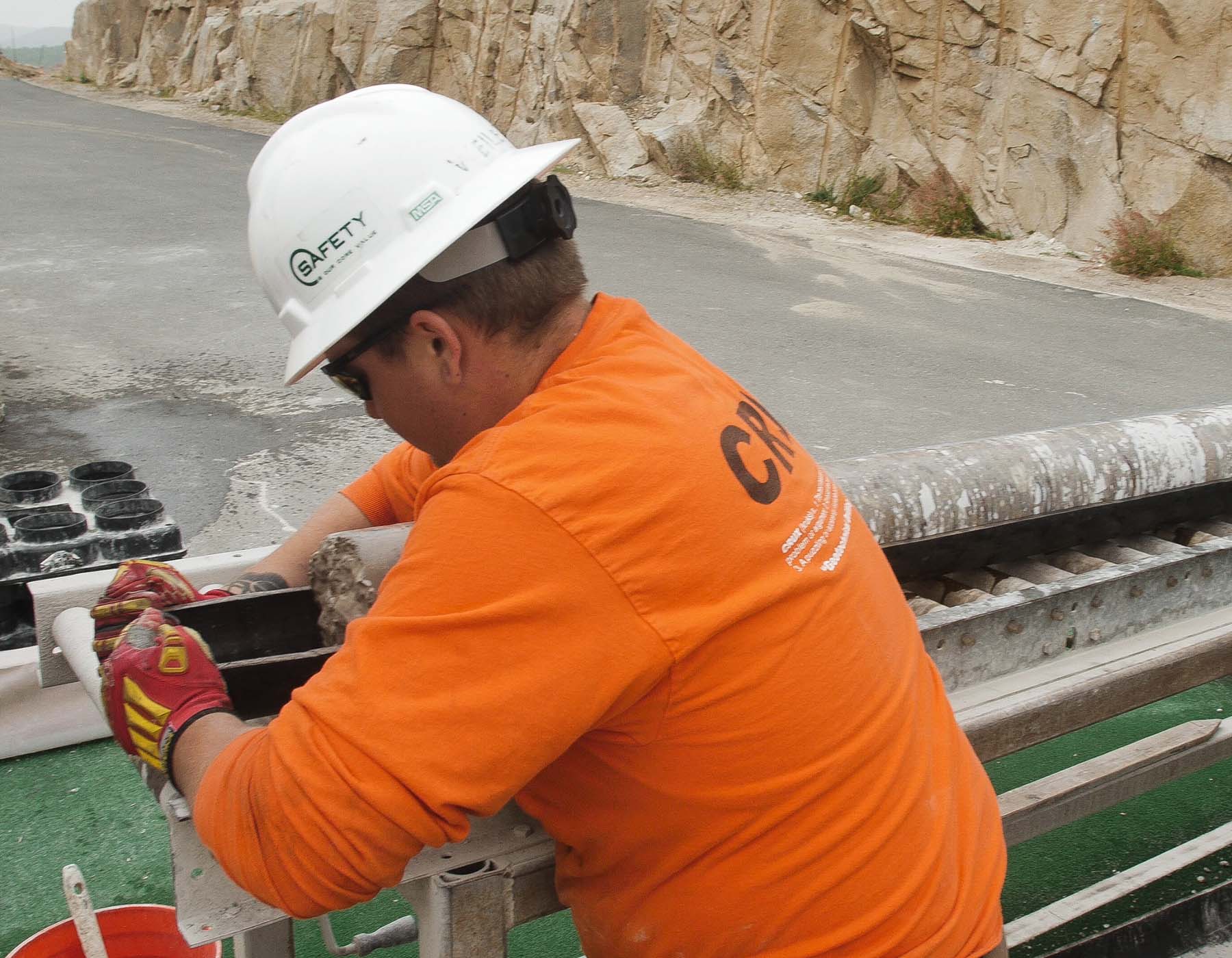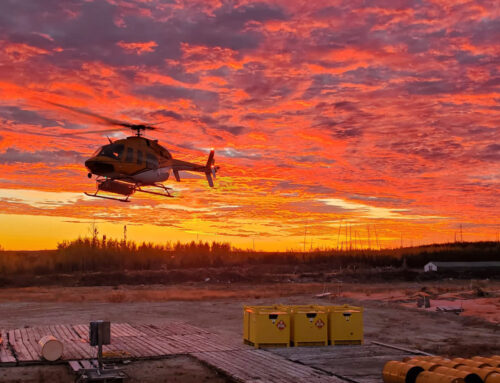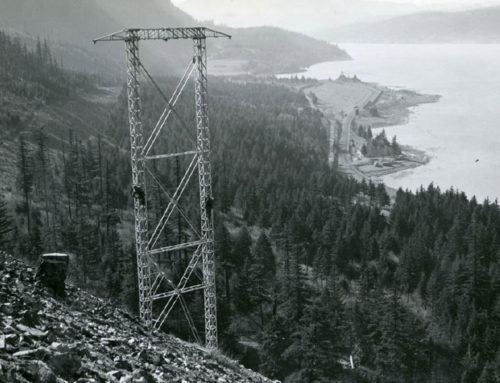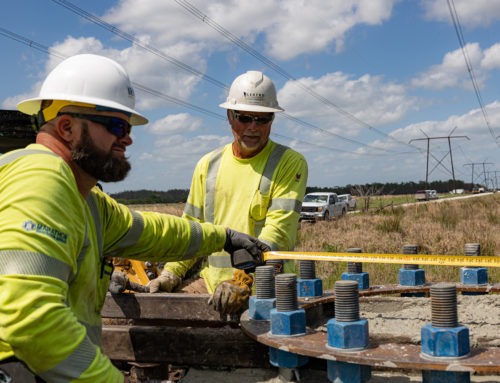San Vicente Dam Raise Project
San Diego County Water Authority teams with Crux Subsurface to verify design standards of the San Vicente Dam Raise Project. Utilizing both crane and helicopter support, a challenging core program was successfully completed.

The San Diego County Water Authority (SDCWA) made history with the San Vicente Dam Raise, completing the tallest dam raise in U.S. history, and the tallest roller-compacted concrete (RCC) dam raise in the world. Located approximately 25 miles outside of San Diego, the dam was raised a total 117 feet, increasing the capacity of the existing reservoir from 90,000 to 242,000 acre-feet.
As overseen by the California Department of Water Resources, Division of Safety of Dams, coring and testing of the RCC was required to ensure that design standards were met. Specialty drilling contractor Crux Subsurface (Crux) had participated in the geotechnical exploration program prior to the dam raise, and was selected to provide additional services to the post-construction coring program. The scope of these services included 6-inch diameter wireline coring at various locations across the dam.
Varying Methods of Access
Limited access to boring locations required that multiple handling procedures and equipment types be employed. The left abutment was inaccessible by way of traditional equipment, and required a helicopter-supported mobilization. A lightweight, componentized drill rig and subsequent equipment were transported to the first coring location on this side of the spillway by medium-lift helicopter. Helicopter-portable mini cranes were utilized onsite to assist with core handling, and to move the drill from one boring location to the next. Three borings were completed at the left abutment to depths of up to 167 feet.
Following helicopter-supported drilling, three borings were completed from the downstream face of the dam. Crux custom-engineered a drill platform for these locations to neutralize the steep slope, which was installed with crane support. The crane was set on top of the dam and also used to transport equipment and personnel from the top of the dam to and from the platform. At the conclusion of each boring, crane support was employed to move the platform over to the next location.
The right abutment of the dam featured paved road access and allowed for more conventional drilling equipment. Ten borings were completed on this abutment. In total, 16 borings and 1,586 feet of drilling were successfully completed.
Core Challenges
Extracting unfractured 10-foot core sections was essential to RCC testing, leading Crux to custom-fabricate a core drill specifically for this project. The altered design featured a rigid drill base that eliminated.
Main points include rigid drill base and drill mast to eliminate any mast oscillation during the drilling process. In the past other contractors have had problems with drill mast oscillation inducing mechanical fractures in the core sample. The drill was also designed with a base that could be wheeled around the drill site by the small helicopter portable track cranes that were being used on the project. The same base was used with the downstream drill platform.
Leading to an initial test program to determine the appropriate drill bit and rotation speed for subsequent coring. This program revealed that the industry-standard core barrel system had large tolerances which adversely affected the RCC core, causing mechanical fractures from the drilling action. Crux worked directly with the tooling manufacturer to develop custom-sized inner tubes with tighter tolerances. The tubes successfully held RCC samples stable throughout drilling and provided SDCWA with continuous samples.
Transporting core samples from the left abutment to the right also posed a significant challenge to the project. In an effort to eliminate the daily need for helicopter support, and reduce overall project costs, Crux designed and installed a specialty pulley system across the 280-foot spillway to transport each of the 10-foot, 300-pound sections of 6-inch core.
Safety Focus
Safety was paramount to the project, and heavily monitored by the California Department of Water Resources, Division of Safety of Dams. A commitment to training programs, hazard mitigation measures, and communication between all parties allowed the post-construction coring program to be completed with no recordable injuries or lost time incidences.
The platform work on the downstream face of the dam created unique safety risks and necessitated specialty training. Crews would need to rappel down the face of the dam to install the drill platform, and work in close proximity to the operating core drill while wearing harness equipment. A High Angle Ropes Rescue instructor was brought in to train field staff, completing all instruction at the dam so any project-specific concerns would be addressed. The training involved modes of access to downstream boring locations, as well as mock medical evacuations in case of emergency.
The narrow crest of the dam and frequency it was traversed throughout the project also raised safety concerns. The 280-foot-long spillway was approximately a foot wide and rounded, creating a challenging crossing many crew members would undertake on a daily basis. Beyond the mandatory harness requirements for crossing the spillway, Crux installed a temporary handrail system as an added safety measure.
As an increased safety measure, Crux designed a temporary handrail system across the 280-foot spillway to facilitate crew access from the right abutment to the left. The crest of the spillway is
Moving Forward
The San Vicente Dam Raise is the largest component of SDCWA’s Emergency Storage Project, which is a system of reservoirs, interconnected pipelines, and pumping stations in the San Diego area. The additional 152,000 acre-feet of storage is owned by SDCWA and will be used to maintain water reserves for emergencies.
The new dam reached full height by late 2012, and subsequent new facilities were completed by mid-2014. Restoration work is currently ongoing, and SDCWA expects to fully reopen the reservoir for recreational activities before 2017.




